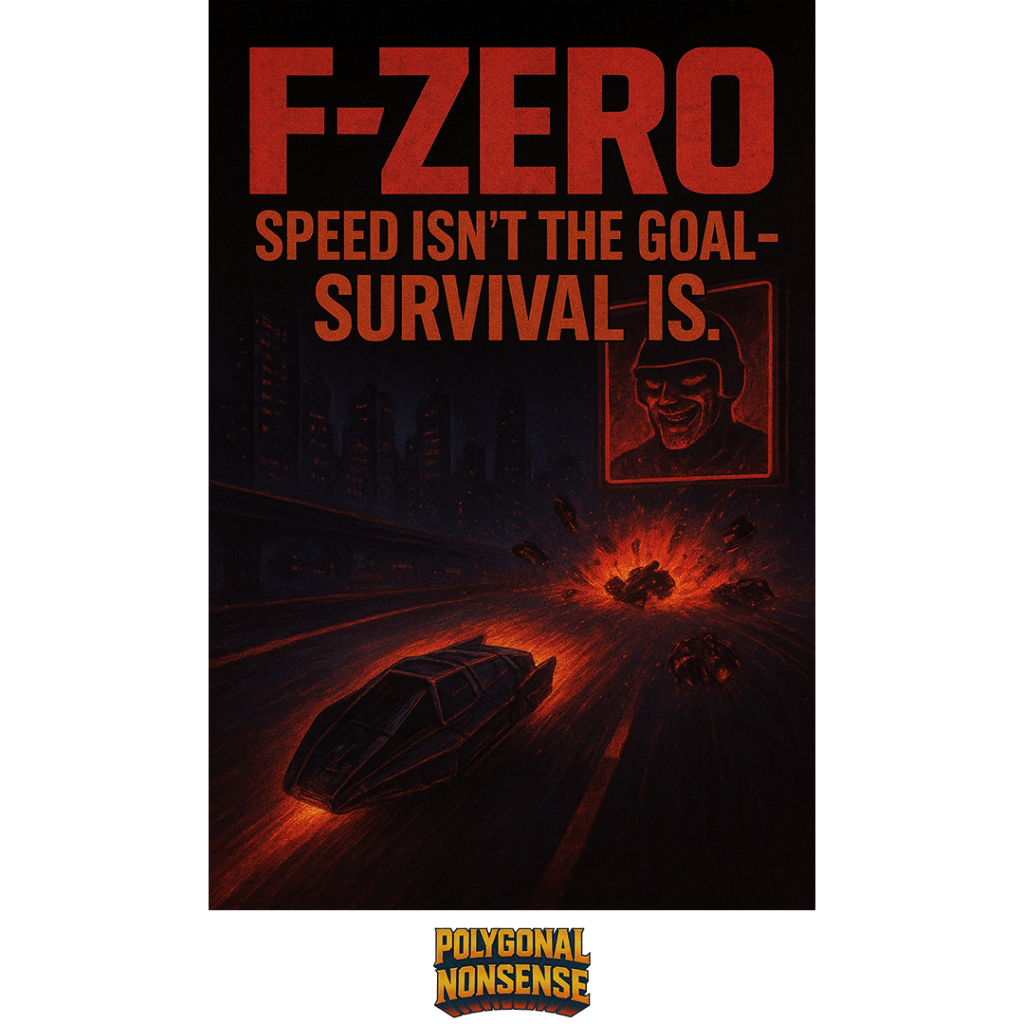

F-Zero: Speed isn’t the goal; survival is.
Ah yes, F-Zero, Nintendo’s high-octane attempt at convincing children that driving at 500 kilometers per hour on a floating highway with no guardrails was not only reasonable but aspirational. Released in 1990, it was the SNES launch title that whispered seductively into the ears of a generation: “Forget realism. What if cars were just murder coffins strapped to bottle rockets?”
The game’s roster of vehicles was basically a dating app for sociopaths. Do you want to drive the Blue Falcon, piloted by the uncomfortably heroic Captain Falcon, who looks like G.I. Joe had a midlife crisis in a strip club? Or maybe you’d prefer the Golden Fox, the car equivalent of a discount martini: stylish, fragile, and guaranteed to leave you in pieces after the second turn.
The tracks themselves were less “circuits” and more “death traps designed by a sadistic architect who just discovered Mode 7 graphics.” Twisting tubes of neon hell suspended over bottomless voids, complete with jump pads that fling you into oblivion if your thumb twitches at the wrong millisecond. The difficulty curve wasn’t so much a curve as it was a brick wall. The game basically dared you to develop the reflexes of a caffeinated hummingbird, or die trying.
And let’s not forget the soundtrack: synthetic adrenaline injections straight into your eardrums, designed to keep you vibrating in a state of mild panic until you either won the race or hurled your controller through the nearest piece of furniture.
In retrospect, F-Zero wasn’t so much a racing game as it was Nintendo’s first experiment in digital Darwinism. Those who could master it went on to achieve great things, like surviving Dark Souls or actually merging in rush hour traffic. The rest? Well, they’re still lying somewhere on Mute City’s asphalt, their dreams smeared across the track at 500 km/h.
©2025 Project Mayhem, Inc.
All trademarks referenced herein are the properties of their respective owners.